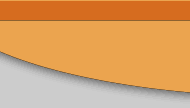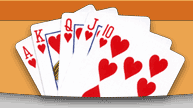Attention roulette players: It's quiz time.
In this spin around the wheel, let's test your knowledge of the game
and its history. Check the link for answers.
1. Roulette in its modern form dates back to:
A. Baden-Baden in the 1500s.
B. Paris in the 1700s.
C. Las Vegas in the 1900s.
2. The most important difference between American and European
roulette is:
A. There are more bets available in Europe.
B. The U.S. wheel is more finely balanced.
C. The European wheel does not have 00.
3. An American roulette wheel has:
A. 36 numbers.
B. 37 numbers.
C. 38 numbers.
4. The wheel has numbers arranged:
A. So that consecutive numbers
are approximately opposite each other.
B. In numerical order.
C. In numerical order, except that 0 and 00 are opposite
each other.
5. English engineer Joseph Jaggers is famous for:
A. Breaking
the bank at Monte Carlo.
B. Inventing the roulette wheel.
C. Introducing roulette to the United States.
6. At the roulette table, roulette chips have a value:
A. Of
$1 each.
B. Of $5 each.
C. Determined when you buy them.
7. At the cashier's cage, roulette chips have a value
of:
A. Zero.
B. $1 each.
C. $5 each.
8. The house edge at American roulette:
A. Is higher than at
most table games.
B. Is lower than at most table games
C. Is about the same as at most table games.
9. Bets on the numbers themselves, whether single-number
bets, or two-, three-, four-, five- or six-number
combinations, are
called"
A. Inside bets
B. Outside bets
C. Number bets.
10. A player betting on red/back, first 18/last
18, even/odd, dozens or columns:
A. May satisfy
the minimum bet requirement by spreading smaller bets among
several of
those
options.
B. May make several bets smaller than the
table minimum provided they add up
to at least twice
the posted
minimum.
C. Must bet at least the table minimum
on each of those propositions.
11. The house edge at roulette comes from:
A. The presence of
zero and double-zero.
B. Numbers occurring less often than by
random chance.
C. The skill of the dealer in landing
the ball in numbers with no bets.
12. Placing a split bet on zero and double-zero
in addition to other wagers:
A. Decreases
the house edge.
B. Increases the house edge.
C. Makes no difference on the house
edge.
13. The house edge on single-number
bets:
A. Is higher than on even-money
bets such as red/black or even/odd.
B. Is lower than on even-money bets
such as red/black or even/odd.
C. Is the same as on even-money
bets such as red/black or even/odd.
14. If double-zero has come up the
last three spins in a row, the
next spin is:
A. More likely than usual to be
double-zero.
B. Less likely than usual to
be double-zero.
C. About as likely as usual to
be double-zero.
15. If some numbers consistently
occur more frequently than expected
by random
chance,
this:
A. Favors the house.
B. Favors the player.
C. Makes no difference.
View The Answers!









